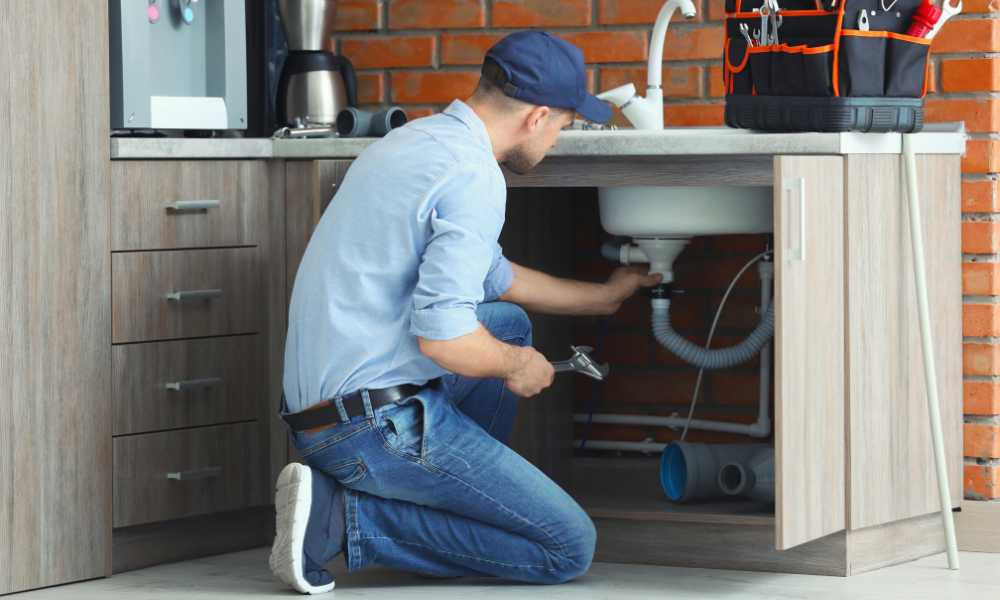Dealing with a stubborn airlock in your sink drain can be a frustrating ordeal, turning a simple task into a plumbing nightmare. Fortunately, rectifying this common household issue doesn’t require a call to the professionals. In this guide, How to Fix Airlock in Sink Drain, we’ll walk you through a step-by-step process to efficiently eliminate that pesky airlock, ensuring your sink’s drainage system is back to its optimal performance. Whether you’re a seasoned DIY enthusiast or a first-timer, our tips and tricks will help you tackle the problem with confidence and ease.
Understanding the Airlock Phenomenon
Before we dawn our metaphorical plumber’s hat, let’s take a moment to demystify what an airlock is in the context of your sink drain bathroom. An airlock occurs when air becomes trapped in the pipes, usually due to a change in pressure. This change could be as mundane as pouring a glass of water or as vital as a change in the municipal water supply. In any case, once trapped, the flow of water can’t push the air past, thus creating a blockage.
Signs of an Airlock
Recognizing an airlock in your sink drain can be relatively straightforward:
- Gurgling sounds from the drain as water passes through
- Slow water drainage
- Water not draining at all
- Water rising in an adjoining sink when you run a different fixture
The Telltale Signs of an Airlock
Before you embark on fixing the airlock, you have to ascertain that this is indeed the problem. Some common signs of an airlock include:
- Gurgling sounds from the sink when water drains
- Slow water drainage
- In extreme cases, you might notice bubbles or burps coming up from the drain
Tools and Materials You Will Need
For the repair job, gather the following items:
- A bucket
- A plumbing snake or drain auger
- A plunger
- Vinegar and baking soda
- A towel
- A pair of rubber gloves
- Safety goggles
Step 1: Locate and Diagnose the Problem
To start, you need to identify if the airlock is truly the issue. Turn on the faucet and observe the flow. If water is barely trickling or not moving at all, you may have an airlock. Next, check for any other possible culprits, such as a clogged drain, broken pipes, or a malfunctioning faucet. If these are not the cause, move on to addressing the airlock directly.
Step 2: The Basic Trick – Bypassing the Airlock
A simple solution that often does the trick is to fill the sink Water supply Lines up to the point where it almost overflows, and then turn the faucet on rapidly. The pressure from the additional water should be enough to push past the airlock and set the water flowing as usual. Sometimes, patience is key; it could take a couple of tries before the airlock is cleared.
Step 3: The Plunger Power Move
If the basic trick doesn’t work, or if you prefer to take a more direct approach, grab a plunger. Make sure there is a bit of water in the sink (to provide some resistance) and plunge vigorously. The force from the plunger helps dislodge the airlock. This method can be quite effective at solving the issue.
Step 4: Applying the Vacuum Method
For those who don’t mind a DIY project, try creating a vacuum on the pipe with a wet cloth and forcefully turning on the faucet. This disrupts the airlock, allowing water to flow through the pipe. Be cautious with this method as it requires some force and the wet cloth should fully cover the drain.
Step 5: The Bleach Trick
In more stubborn cases, a small amount of household bleach poured down the drain while the sink is full of water can break down the airlock. This method is controversial, so ensure you read up on the chemical properties of bleach and its interaction with your sink materials before attempting this step home guide
Step 6: Call in the Professionals
If these DIY tricks do not work, or if you’re uncomfortable trying them, it may be time to call a plumber. A professional will have the tools and knowledge to assess the situation and clear the airlock safely and effectively.
Preventing Future Airlocks
Considering you’ve done your duty and freed the sink from the grips of the airlock, it’s fair to ask: how do you keep it from returning?
Maintaining Good Drain Hygiene
Regularly flush your drains with hot water to help prevent any air from getting trapped. This is particularly effective for seldom-used sinks.
Using a Drain Screen
A screen can stop larger items from falling down your drain and stalling your pipes. It’s a small investment that can save lots of hassle.
Mind Your Media
Be mindful of what goes down the drain. Oils, fats, and certain soaps can solidify in the pipes, affecting water flow and, potentially, causing airlocks.
Conclusion
Dislodging an airlock in your sink can be an easy DIY job in most cases. Regular pipe maintenance, like running hot water and grease-cutting products down your drain, can prevent airlocks from forming in the first place. Remember to always proceed with caution when dealing with plumbing issues to avoid further damage. With these steps, you should be well-equipped to tackle the next airlock without breaking a sweat — and get back to enjoying that smooth, flowing sink.




